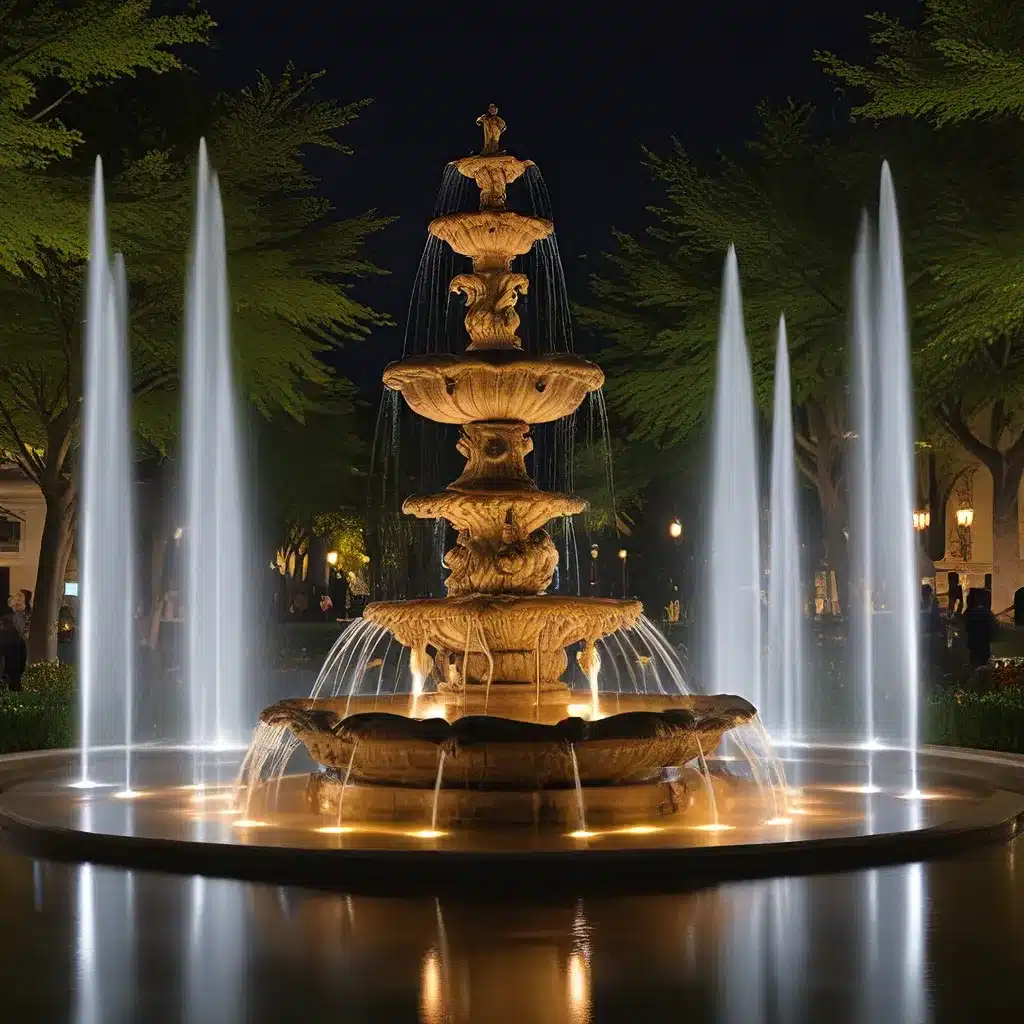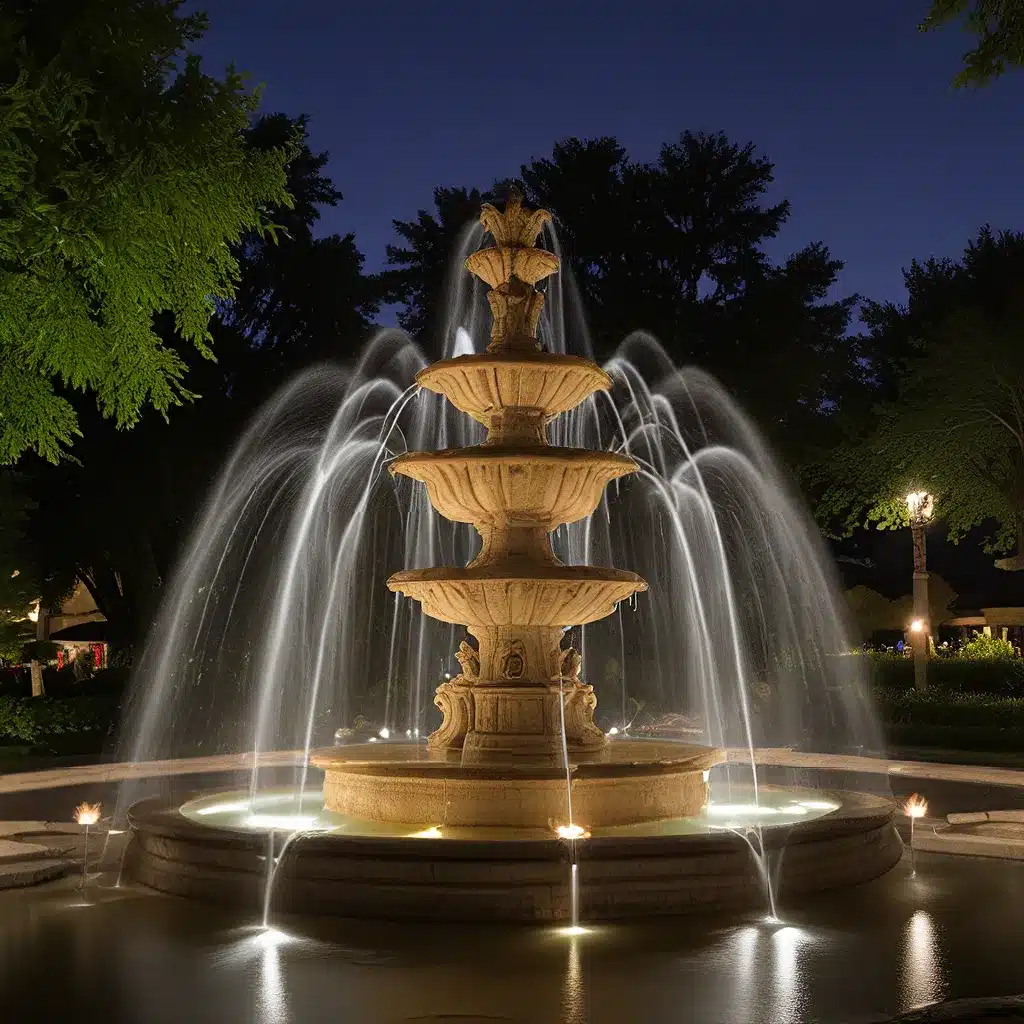
Fountain Design Essentials – Welcome to Fountain Lights
Fountain Design Essentials – Welcome to Fountain Lights

As an avid fountain enthusiast, I’ve always been captivated by the way water and light can come together to create truly mesmerizing displays. It’s like a symphony of elements, each one playing a vital role in the overall experience. And when it comes to fountain design, I firmly believe that the strategic use of lighting can be the key to unlocking a whole new level of visual captivation.
Lighting can truly be the x-factor that transforms a fountain from a simple, functional feature into a true work of art. By carefully selecting and positioning the right lighting elements, you can create a sense of depth, drama, and even emotional resonance that draws the viewer in and leaves a lasting impression.
One of the primary ways that lighting can elevate fountain design is through the creation of visual depth. Imagine a fountain where the layers of water are accentuated by strategically placed spotlights, casting shadows and highlighting the intricate patterns of the falling droplets. This depth can add a sense of dimensionality that makes the fountain feel more dynamic and engaging.
But it’s not just about creating depth – lighting can also be used to evoke certain emotions and moods. Warm, golden hues can lend a sense of coziness and comfort, while cooler, more vibrant colors can inject an element of energy and excitement. By carefully curating the lighting palette, fountain designers can craft an experience that aligns with the desired aesthetic and atmosphere of the space.
While artificial lighting is certainly a powerful tool in the fountain designer’s toolkit, I firmly believe that harnessing the power of natural light can take fountain design to new heights. After all, the sun is the ultimate light source, and its ever-changing qualities can add a level of dynamism and unpredictability that can’t be replicated with man-made illumination.
Recent research has shown that the strategic incorporation of natural light into architectural design can have a profound impact on the functionality, aesthetics, and sustainability of a space. The same principles can be applied to fountain design, where the interplay between water, light, and the surrounding environment can create a truly mesmerizing experience.
One way to leverage natural light is through the use of reflective surfaces. By strategically placing mirrors or other reflective elements around the fountain, designers can capture and redirect the sun’s rays, creating a dazzling array of light and shadow that dances across the water’s surface. This can be particularly effective in outdoor settings, where the changing position of the sun throughout the day can add an ever-evolving layer of visual interest.
Another technique is the incorporation of water features that accentuate natural light. For example, fountains with slender, arching jets can act as prisms, refracting the sunlight into a kaleidoscope of colors and patterns. Or, cascading water features can create a shimmering, iridescent effect that adds a sense of magic and wonder to the overall design.
While the power of natural light is undeniable, there’s also a place for carefully curated artificial lighting in fountain design. By blending the two, designers can create a truly mesmerizing and versatile experience that caters to a wide range of settings and preferences.
Imagine a fountain that comes alive at night, with strategically placed spotlights that highlight the water’s movement and cast a warm, inviting glow over the surrounding area. Or, a fountain that transitions seamlessly from a sun-dappled, natural-light-infused display during the day to a vibrant, color-changing spectacle after sunset.
The key is to strike the right balance between natural and artificial lighting, ensuring that each element complements the other and contributes to an overall cohesive and visually stunning experience. This might involve carefully considering the placement, intensity, and color temperature of the artificial lights, as well as the strategic positioning of reflective surfaces and water features to maximize the impact of natural illumination.
At the end of the day, the strategic use of lighting in fountain design is all about elevating the overall experience for the viewer. It’s about creating a sense of wonder, tranquility, or even exhilaration – whatever the desired emotional response may be.
By harnessing the power of light, whether natural or artificial, fountain designers can transform a simple water feature into a true work of art. And for those of us who are passionate about the beauty and artistry of fountains, that’s a truly exciting prospect.
So, if you’re a fountain enthusiast like me, I encourage you to explore the world of lighting design and see how it can take your favorite water features to new heights. Who knows – you might just discover a whole new level of captivation and enchantment.
And if you’re looking to take your fountain lighting game to the next level, be sure to check out the services offered by Fountain Lights. Their team of experts can help you unlock the full potential of your water features and create a truly unforgettable experience.
Share to :
Subscribe to our newsletter for the latest in fountain design, innovative lighting ideas, and exclusive tips straight to your inbox. Join the community shaping the future of water features.

Rapid delivery to your doorstep.

Excellence in every product.

Great value for your investment.

Assistance at any hour.
Fountain Lights — Illuminating creativity in every splash!
Copyright © 2023. All Right Reserved